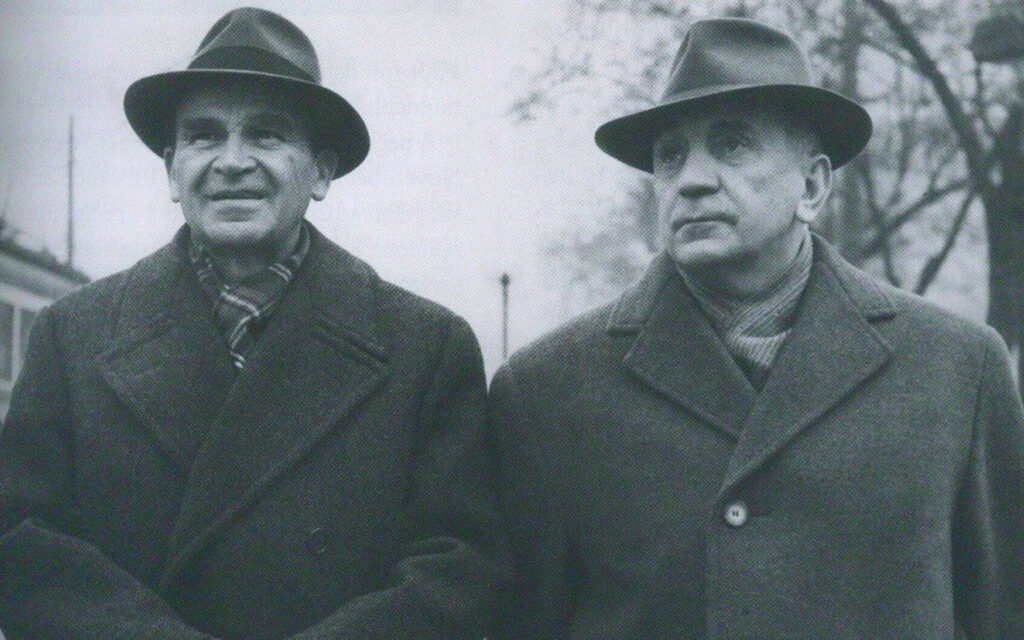Gusztáv Sebes: The Architect of Hungarian Football's Golden Age
The hungarian coach is one of the most influential football managers in history, is best remembered for his pivotal role in shaping the tactics of the Hungarian national team during the 1950s. As the mastermind behind the legendary « Mighty Magyars, » Gusztáv Sebes revolutionized football with his innovative strategies. He laid the foundations for modern tactical play. This article explores Sebes’ tactical evolution, his achievements, and the lasting impact of his coaching philosophy.

Sebes' Tactical Philosophy: The Birth of Modern Football
Sebes’ teams played a fluid, fast-moving game that seamlessly integrated attacking and defensive elements.
Fluid Attack and Defence:
He introduced the concept of players switching positions dynamically, which created unpredictability and overloads in attack.
Positional Interchange:
Long before it became synonymous with the Netherlands, Sebes was already advocating for a system where players were versatile and could adapt to multiple roles on the pitch.
The Rise of the Mighty Magyars
Sebes’ most notable achievement came with the Hungarian national team, particularly during the period between 1950 and 1956, when they were known as the Mighty Magyars. This period marked the peak of Hungarian football and saw Sebes implement several groundbreaking tactics.
- 4-2-4 Formation: Sebes is credited with innovating the 4-2-4 formation, where the two wingers (Puskás and Czibor) played a key role in creating width, while the central forwards (Kocsis and Puskás) formed a formidable strike partnership.
- Key Achievements: Under Sebes, Hungary went unbeaten for 32 matches and defeated England 6-3 at Wembley in 1953, a result that stunned the football world.
- The 1954 World Cup: Although Hungary lost in the final, Sebes’ tactical setup revolutionised football with an emphasis on possession-based play and quick transitions.
Key Tactical Innovations of Sebes
Sebes’ impact on football tactics cannot be overstated. His key innovations included:
Dynamic Midfield Play:
Sebes favoured a flexible midfield, with players like József Bozsik operating as deep-lying playmakers, controlling the tempo and directing attacks from midfield.
Versatility of Forwards:
Sebes allowed forwards to drop deeper into midfield, creating overloads and enabling a more fluid attacking play, which confused opposing defences.
High Pressing and Fluid Movement:
His teams employed a form of pressing that sought to win the ball high up the pitch, putting immense pressure on the opposition and dictating the pace of the game.
Hungary's Legacy Under Sebes
Under Sebes, Hungary was not only the dominant force in European football but also influenced the global footballing landscape. His tactical approach laid the groundwork for future generations of teams and managers.
1953 Wembley Victory:
The 6-3 win over England at Wembley is considered one of the most iconic matches in football history, showcasing Sebes’ tactical genius. The match highlighted Hungary’s mastery of ball movement, positional play, and offensive transitions.
1954 World Cup:
Although they ultimately lost in the final to West Germany, Sebes’ Hungary had already set a new standard for football. His approach of flexible, attacking football with a strong emphasis on technique influenced future generations of football coaches worldwide.
The Influence of Sebes' Tactics on Modern Football
Sebes’ tactical approach was a precursor to the principles of Total Football popularised by the Netherlands and later adopted by teams like Barcelona and Bayern Munich. His belief in:
Positional Fluidity:
Players shifting roles according to the demands of the match was one of Sebes’ most enduring legacies.
Ball Possession and Quick Transitions:
His emphasis on holding onto the ball and transitioning quickly from defence to attack laid the foundation for modern possession-based football.
Key Players in Sebes' System
Sebes built his teams around a core of talented and versatile players, who were key to executing his tactical vision:
Ferenc Puskás:
As the captain and star forward, Puskás was a central figure in Sebes’ system, contributing both as a goalscorer and as a playmaker.
József Bozsik:
The deep-lying playmaker, Bozsik’s intelligence in midfield was crucial to Sebes’ possession game.
Sándor Kocsis:
Kocsis’ aerial ability and knack for scoring goals made him the perfect foil to Puskás in attack.
Zoltán Czibor:
A winger with pace and skill, Czibor was pivotal in stretching the opposition and providing crosses into the box.
Sebes' Legacy: Shaping the Future of Football
Sebes’ contributions to football tactics were groundbreaking. His ability to blend defensive organisation with fluid attacking play created a footballing philosophy that would influence future generations. While he may not have won as many trophies as some of his contemporaries, his influence on the development of modern football is undeniable.

